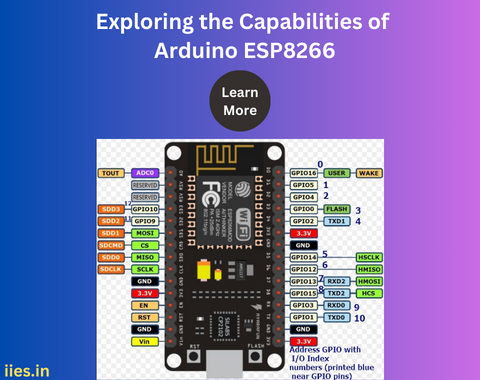This section will delve into the security considerations specific to the Arduino ESP8266. Topics such as secure data transmission, device authentication, and encryption will be explored to ensure that developers can implement best practices in safeguarding their projects against potential threats. Understanding these security principles is crucial for building reliable and secure IoT solutions.
Case Studies and Success Stories:
Real-world examples and success stories can provide valuable inspiration and insights. In this section, we will explore case studies of projects that have successfully utilized the Arduino ESP8266 to address specific challenges or create innovative solutions. Whether it's a smart home automation system, an environmental monitoring device, or an industrial IoT application, these case studies will showcase the versatility and adaptability of the ESP8266 in diverse contexts. Collaboration and Open Source Spirit : The Arduino ESP8266 owes much of its success to the principles of open-source collaboration. This section will highlight the collaborative spirit of the Arduino community and the importance of sharing knowledge and code. Through collaborative efforts, developers can contribute to the improvement of libraries, share code snippets, and collectively address challenges. Understanding the collaborative nature of the Arduino ecosystem fosters a sense of community and encourages individuals to contribute to the ongoing development of this remarkable platform.
Educational Applications :
The Arduino ESP8266 serves as an excellent educational tool, introducing students and beginners to the world of embedded systems, programming, and IoT. This section will explore how educators can integrate the ESP8266 into their curriculum to engage students in hands-on learning experiences. By providing practical examples and project ideas suitable for educational settings, this section aims to inspire the next generation of engineers and innovators.
Environmental Impact :
The Arduino ESP8266’s low cost, low power consumption, and versatility contribute to its positive environmental impact. This section will discuss how the ESP8266 can be used in environmentally conscious projects, such as smart agriculture, energy monitoring, and pollution control. By harnessing the power of IoT, developers can create solutions that promote sustainability and contribute to a greener future.

